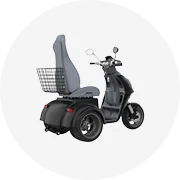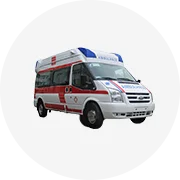Types of Kids Mini Willys Jeep
A Kids' Mini Willys Jeep offers children a taste of adventure with scaled-down versions of the iconic military vehicle. These miniature vehicles come in various types to suit different preferences, ages, and environments.
Electric Mini Willys Jeep
Modern, battery-powered vehicles offering safe and convenient operation for younger children. These popular models eliminate the need for gasoline while providing an authentic driving experience.
Best for: Younger children (3-6 years), indoor/outdoor use, parents seeking convenience
Gas Mini Willys Jeep
Classic, robust models powered by small gasoline engines. These offer more power, longer run times, and authentic engine sounds for a more realistic experience.
Best for: Older children (6-8 years), outdoor adventures, longer playtime sessions
Parent Tip: Electric models offer quieter operation and are ideal for neighborhood use, while gas models provide more power but require additional maintenance and adult supervision.
| Jeep Type | Power Source | Age Range | Advantages | Limitations |
|---|---|---|---|---|
| Electric Mini Willys Jeep | Rechargeable batteries (12V/24V) | 3-6 years | Safe, quiet, remote control option, minimal maintenance | Limited run time, less power |
| Gas Mini Willys Jeep | Small gasoline engine | 6-8 years | More power, longer run time, authentic experience | Requires fuel, more maintenance, louder |
| Electric Ride-On Jeep | Rechargeable batteries (12V/24V) | 3-6 years | Modern features, parent remote, safety features | Higher price point, battery limitations |
| Gas Ride-On Jeep | Small gasoline engine | 6-8 years | Durable metal chassis, off-road capability | Requires adult supervision, higher maintenance |
Specifications and Maintenance of Kids' Mini Willys Jeep
Understanding the technical specifications helps parents make informed decisions and properly maintain these miniature vehicles for optimal performance and safety.
Key Specifications
Vehicle Dimensions
- Width: 1300mm
- Length: 1700mm
- Height: 620mm
- Wheelbase: 860mm
- Ground Clearance: 110mm
Vehicle Body
- Steel structure framework
- Durable ABS plastic shell
- Front crash protection system
- Rear impact protection system
Chassis & Suspension
- Unibody chassis construction
- 4 independent suspension wheels
- Enhanced stability on uneven terrain
- Shock absorption system
Power System
- Battery options: 12V or 24V
- 1-2 battery configurations
- 1-2 motors (12V/24V)
- Average runtime: 1-2 hours
Special Features
- Bluetooth connectivity
- MP3 player compatibility
- Parental remote control
- Headlights, taillights, and interior lighting
Essential Maintenance Tips
Safety First: Always disconnect the power source before performing any maintenance on your child's Mini Willys Jeep.
| Maintenance Area | Frequency | Actions Required |
|---|---|---|
| Tire Pressure | Monthly | Check and adjust air pressure to manufacturer specifications |
| Battery | After each use | Charge fully; check terminals for corrosion |
| Exterior Cleaning | Weekly | Wash with mild soap, remove mud/debris to prevent rust |
| Interior Cleaning | Monthly | Vacuum seats, wipe surfaces with gentle cleaner |
| Electrical Components | Monthly | Check wiring connections, test lights and features |
| Storage Protection | When not in use | Keep covered, away from direct sunlight and precipitation |
Maintenance Tip: Create a mini "garage" space for your child's Willys Jeep to protect it from the elements. Even a simple tarp covering can significantly extend the vehicle's lifespan and maintain its appearance.
How to Choose Kids' Mini Willys Jeeps
Selecting the perfect Mini Willys Jeep involves considering several important factors that affect safety, enjoyment, and value for money.
Safety Considerations
The most crucial factor when selecting a children's vehicle. Look for models with adjustable speed settings, sturdy construction, seat belts, and remote parent controls.
Priority features: Speed limiters, emergency stop functions, stable wheelbase
Build Quality Assessment
Evaluate materials and construction quality. Metal frames offer durability while high-grade ABS plastic provides better impact resistance for inevitable bumps.
Look for: Reinforced chassis, premium wheels, quality paint finish
Key Selection Criteria
| Selection Factor | What to Consider | Why It Matters |
|---|---|---|
| Safety Features | Seat belts, speed control, remote shut-off, stable design | Prevents accidents and injuries during play |
| Build Quality | Material durability, frame strength, wheel construction | Determines longevity and ability to withstand rough play |
| Design & Style | Authentic appearance, color options, interior features | Enhances play experience and child engagement |
| Ease of Use | Simple controls, adjustable features, weight considerations | Ensures comfortable operation for children of various ages |
| Price & Warranty | Budget alignment, warranty coverage, replacement parts availability | Provides long-term value and protection for your investment |
Buying Tip: Consider purchasing a slightly larger model with adjustable features that can "grow" with your child. While initially more expensive, this approach often provides better value over time than replacing smaller models as your child grows.
How to DIY and Replace Kids Mini Willys Jeep Parts
Maintaining and repairing your child's Mini Willys Jeep can extend its lifespan and save money. Follow these systematic steps for successful parts replacement.
Identify the Part to be Replaced
Carefully examine the component that needs replacement. Note its dimensions, connections, and specific function. Reference the owner's manual to identify exact part numbers and specifications. This ensures compatibility with the vehicle's existing systems.
Turn Off the Power
For electrical models, disconnect the battery by removing the negative terminal first. For gas models, ensure the engine is off and cool. Remove the key or disable the ignition system to prevent accidental starting during repairs.
Disassemble Carefully
Use appropriate tools (screwdrivers, wrenches, pliers) to remove fasteners. Take photos before disassembly to remember component positioning. Store small parts in labeled containers to prevent loss. Work methodically to avoid damaging surrounding components.
Clean the Area
Once the part is removed, clean the mounting area thoroughly. Remove dirt, old lubricant, and corrosion with appropriate cleaners. Ensure all mounting surfaces are dry and free of debris before installing the new component.
Install the New Part
Position the replacement part correctly, aligning with mounting holes or connection points. Secure with appropriate fasteners, being careful not to overtighten and strip threads. Apply lubricant where necessary according to manufacturer specifications.
Test the Vehicle
Before final reassembly, conduct a preliminary test to ensure the replacement part functions correctly. For electrical components, check connections and operation. For mechanical parts, verify proper movement and alignment.
Reassemble
Follow your disassembly photos to replace components in the correct order. Secure all fasteners to proper torque specifications. Double-check that no tools or loose parts remain inside the vehicle before completing reassembly.
DIY Safety Warning: Always wear appropriate safety gear when working on kids' vehicles. Keep small parts away from children during maintenance, and never modify safety features like speed limiters or braking systems.
Frequently Asked Questions
A Mini Willys Jeep is a scaled-down version of the classic military Jeep Willys, designed specifically for children. These miniature vehicles capture the iconic design elements of the original Willys—including the distinctive grille, round headlights, and rugged boxy shape—while being appropriately sized for young drivers. Available in both electric and gas-powered versions, these vehicles allow children to experience the adventure and heritage of the original Jeep in a safe, age-appropriate format.
Yes, Mini Willys Jeeps designed for children incorporate numerous safety features to ensure appropriate use. Quality models include speed limiters that restrict maximum velocity based on the child's experience level, sturdy roll bars or frames to protect in case of tipping, and often parent remote controls for intervention when necessary. To maximize safety:
- Always select age-appropriate models (typically 3-8 years depending on specifics)
- Ensure proper supervision during operation
- Maintain the vehicle regularly to check for any safety concerns
- Use in appropriate environments away from traffic and steep slopes
- Consider models with parental remote control for younger children
Mini Jeep ride-on vehicles are typically designed for children aged 3 to 8 years old, with specific age recommendations varying by model. The appropriate age range depends on several factors:
| Age Range | Typical Features | Recommended Models |
|---|---|---|
| 3-5 years | Lower speed settings (2-3 mph max), simplified controls, parental remote | 12V Electric Mini Willys Jeeps |
| 5-8 years | Medium speeds (3-5 mph), more responsive handling, additional features | 24V Electric or small Gas Mini Willys Jeeps |
| 6-8+ years | Higher speeds, more realistic operation, advanced features | Larger Gas Mini Willys Jeeps with safety features |
Always check the manufacturer's specific age and weight recommendations for each model to ensure proper fit and safe operation.
Many Mini Jeeps designed for children are available as electric ride-on vehicles, though gas-powered options exist as well. Electric Mini Willys Jeeps typically feature:
- 12V or 24V battery systems providing 1-2 hours of continuous operation
- Rechargeable batteries that typically fully charge in 8-12 hours
- Variable speed settings controlled by the accelerator pedal
- Optional parental remote control for supervised operation
- Quieter operation suitable for residential neighborhoods
- Lower maintenance requirements compared to gas-powered models
Electric models are generally preferred for younger children and indoor/outdoor use due to their safety features and ease of operation.































































